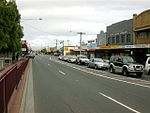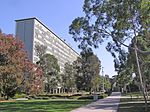Australian Regenerative Medicine Institute
The Australian Regenerative Medicine Institute (ARMI) is an Australian medical research institute. Opened in April 2009, the institute is based at the Clayton campus of Monash University, in the Monash Science Technology Research and Innovation Precinct. ARMI is one of the world's largest regenerative medicine and stem cell research hubs. Its research aims to restore and regenerate damaged tissue and organs by injecting or implanting cells to allow the human body to heal and recover. Research focuses on developing effective treatments for a range of currently incurable diseases, such as cancer, arthritis and other musculoskeletal conditions, diabetes and cardiovascular diseases, as well as neurotrauma. In addition, ARMI is also looking at technologies to treat ageing itself via regeneration. Facilities at the Institute include FishCore, the largest zebrafish facility of its kind in the Southern Hemisphere.
Excerpt from the Wikipedia article Australian Regenerative Medicine Institute (License: CC BY-SA 3.0, Authors).Australian Regenerative Medicine Institute
Innovation Walk, Melbourne Clayton
Geographical coordinates (GPS) Address Nearby Places Show on map
Geographical coordinates (GPS)
| Latitude | Longitude |
|---|---|
| N -37.910555555556 ° | E 145.12916666667 ° |
Address
Biotechnology
Innovation Walk 15
3800 Melbourne, Clayton
Victoria, Australia
Open on Google Maps





